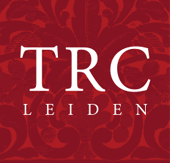There are five main colour groups in China namely red (pink), yellow, blue (also green), black and white. Each colour had its designated purposes. Not surprisingly the same colour range was used for lotus shoes. Red, for example, is the colour of all festive occasions, such as weddings and New Year celebrations. It is also regarded as the colour of virtue. Red is used by a wide range of social groups, while being associated with younger people. In contrast, certain hues of yellow were specifically associated with emperor, empress and the heir apparent. Certain other forms of yellow were used by other members of the imperial family and certain court members. Non-imperial yellows were used by elite and wealthier men and women, and to a much lesser extent by poorer people.

White was the colour of mourning in China and there were very strict rules concerning the wearing of white. There were five degrees of mourning depending on who had died, their relation to the wearer (father, mother, daughter, son) and when the death had taken place. Pure white clothing and shoes were worn following the death and funeral of someone, followed by white shoes with white or grey embroidery or other adornment . Later clothes and shoes changed to dull blue, black or grey forms. Mourning could last up to 27 months depending on who had died.
Decoration on lotus shoes
A wide range of symbols, objects, fauna and floral designs were used to decorate lotus shoes. Many of these represented good luck, good health, longevity and so forth, or they indicated when the shoe was to be worn (spring, summer, autumn or winter), or for a particular special festival. The floral symbols for the four seasons were plum blossoms (spring), peonies (summer), lotus (autumn) and chrysanthemums (winter). But other forms were used such as peaches, bamboo and pine trees. Birds were represented by, among others, cranes and phoenixes. While fauna designs might include cats, bats, butterflies, cats, tortoises and monkeys. In addition, the “five poisons” might be found, namely, toads, snakes, lizards, centipedes and scorpions, which were regarded as amulets against evil.

 Lotus shoe designs from embroidery pattern book (TRC 2014.0030).
Lotus shoe designs from embroidery pattern book (TRC 2014.0030). Lotus shoe designs from embroidery pattern book (TRC 2014.0030).
Lotus shoe designs from embroidery pattern book (TRC 2014.0030).
Another symbol that was often used was that of shou that has the meaning of longevity. It was often used for shoes intended for a wedding. Shou some cases it can also be found on the soles of funeral shoes. In this case the character shou has the meaning of long life in the sense of the lineage continues forwarded despite the death of someone.
Sole embroidery If the soles were made of layered cotton (rather than wood), they were usually quilted with small, running stitches in a variety of simple lines or geometric forms. Sometimes, ladies who received guest while sitting on a kang (bed) had elaborately embroidered soles decorated with intricate designs worked in silk. These were intended for pleasurable viewing, should (accidentally) the sole of the shoe face the visitors. Dancers also embellished their shoe soles with brightly coloured silk embroidery and sometimes small sequins to add to the complete visual effect.

